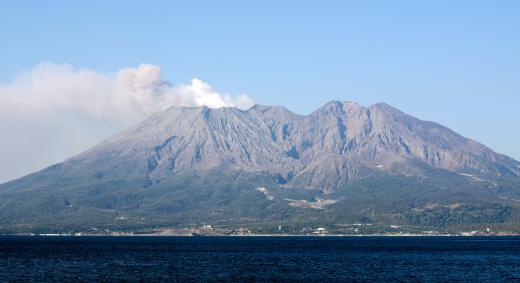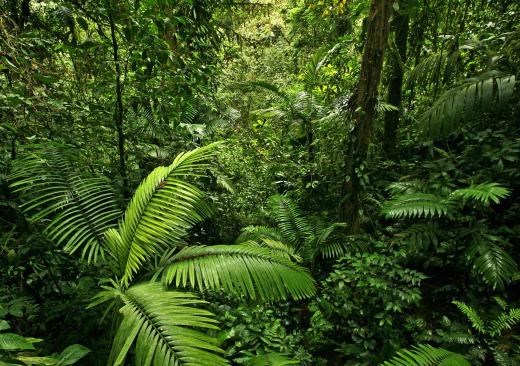What is Natural Climate Change?
While human activity since the Industrial Revolution in the 1700s has propelled recent global warming, there is also natural climate change that occurs as a result of normal atmospheric changes. Typically, climate change refers to a sustained change in weather across the globe, though it can be restricted to a region. Natural climate change may be caused by several factors, or climate forcings, including plate tectonics, ocean variations, tilt of the planet, orbital fluctuations, and changes in solar output.
While scientists have recorded climate change since the 1800s, previous variations in weather must be gleaned from oral histories, written documents, and archaeological evidence. Scientists often use glaciers as a lens on past natural climate change, dating when a glacier advanced, indicating a cold spell, or retreated, indicating a period of warmth. Ice core samples also shed light on ancient weather through providing information on the amount of carbon dioxide that was in the atmosphere at a given time. Fossils of plants, animals, insects, and pollen may also be used to date climate cycles, as certain species survive under different conditions. This evidence points to a climate cycle marked by ice ages and periods of warmth reaching far back into prehistoric times.

One important reason for natural climate change can be attributed to plate tectonics and continental drift. Just under the oceanic and continental crusts, or the part of the Earth that humans can see, lies a rigid layer of the Earth, called the lithosphere. The lithosphere is divided into plates that move over a deeper, hotter, more fluid layer. These plates cause the restructuring of landmass, particularly at the boundaries where plates may grind, causing earthquakes, move away from one another, causing earthquakes and geothermal hotspots, or collide with another, causing earthquakes, mountain ranges, volcanoes, and oceanic trenches. This restructuring moves landmasses from one region of the world to another, changes wind and ocean currents, and produces volcanoes, all factors which can lead to regional or global natural climate change.

The eruptions of volcanoes cause a cooling effect on the Earth. As the volcano erupts, it ejects ash and sulfur dioxide into the atmosphere. This material creates a blanket in the atmosphere which is distributed across the globe through the motion of wind. The ash and sulfur dioxide blocks sunlight from penetrating the atmosphere and warming the Earth. Without this sunlight, the Earth begins to cool.

This differs from greenhouse gases, like carbon dioxide, which freely let sunlight pass through the atmosphere to Earth’s surface, but block light from traveling back out towards space, causing a warming effect. Human activities have caused a rise in carbon dioxide emissions and a drop in the Earth’s ability to remove carbon dioxide from the atmosphere.
The combined effects of variations in Earth’s position to the Sun also contribute to natural climate change. Over the course of the year, the Earth changes its tilt so that it’s north end is towards the Sun for roughly half the year and the south end is towards the Sun for the other half, causing seasonal climate variation. The axis, or the line on which the Earth tilts and rotates, also changes very slightly over time to put some areas of the Earth in more direct sunlight than others. Additionally, the Earth’s orbit changes throughout the year, so that it is closer to the Sun and its heat at some points of the year than at others.
The thermohaline circulation in the Earth’s oceans, also known as the ocean conveyor belt, also impacts natural climate change. Generally, thermohaline circulation is deep ocean currents that carry heat to different parts of the world. This process is largely driven by unequal masses of dense and less dense seek to stabilize themselves. Changes in this circulation change how heat is distributed across the Earth and how much carbon dioxide the ocean is able to remove from the atmosphere.
AS FEATURED ON:
AS FEATURED ON:













Discussion Comments
@ Glasshouse and GlassAxe- You are both right, and this is part of the reason that scientists believe that the human causes of climate change are so powerful and dangerous. Our ice sheets are melting and calving at an unprecedented rate, yet at the same time, the planet is in a period of cooling.
@ Glasshouse- If the natural causes of climate change are making the planet's climate less extreme from season to season mean that we are moving towards a period of glaciation? I say this because warmer winters translates to more snow at the polar extremes. At the same time, cooler summers means less melting of polar ice caps. This would create a positive feedback loop where the polar icecaps would grow. Isn't this a period of global cooling?
@ Submariner- Climate change research is still working on creating models for climate change that include anthropogenic impacts. It is exceptionally hard for scientists to pinpoint the exact impact that people are having on the climate because there are no reliable climate models that can predict things like population growth, economic activity, and actions to mitigate climate change (all indirect factors on climate change).
In general, climate change based purely on the Milankovitch cycles would put the planet roughly halfway between maximum and minimum obliquity and decreasing. This means that the tendency would be for winters to become warmer and summers to become cooler. The climate change would not necessarily be hotter or colder, but rather a point where there would be less of a difference between seasons. Remember though, that anthropogenic impacts may overpower the Milankovitch cycles relating to obliquity.
If we were to ignore human caused climate change, would the earth be in a period of cooling or warming right now?
Post your comments